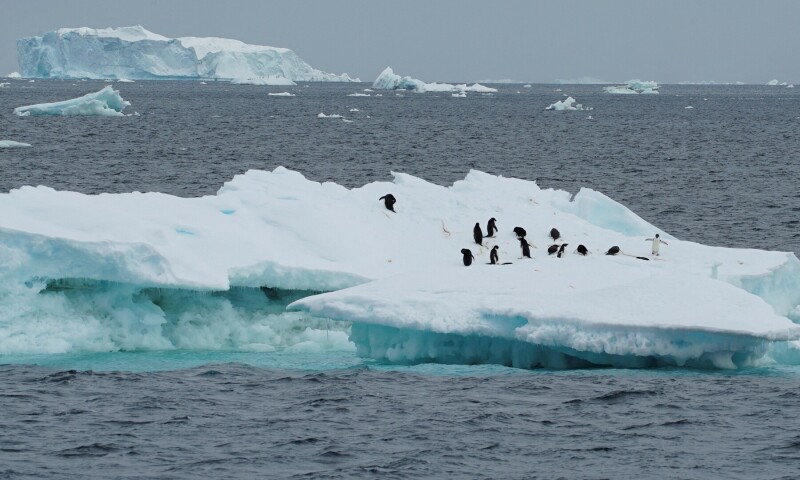
[ad_1]

UN estimates spending on nature needs to increase to $542bn annually by 2030, to halt nature loss, meet climate goals.
Global destruction of nature has reached unprecedented extremes.
As the United Nations two-week COP16 biodiversity summit kicks off on Monday in Cali, Colombia, here is what you need to know about nature’s rapid decline — and its importance to the global economy.
Animals and Plants
Plants and animals play significant parts in keeping nature humming, from cycling nutrients throughout an ecosystem to aerating soils and engineering rivers.
Without plants and animals, the world would not be habitable for humans.
However, more than a quarter of the world’s known species, or a total of about 45,300 species, are now threatened with extinction, according to the International Union for Conservation of Nature and Natural Resources (IUCN).
Animals on the verge of extinction include Mexico’s vaquita porpoise, northern white rhinoceros in Africa, and the red wolf in the United States.
Monitored populations of wild animals had shrunk by 73 per cent globally by 2020 compared with 1970 figures, according to the World Wide Fund for Nature (WWF).
Forests
Because forests are home to the most plant and animal species in any ecosystem, including 68pc of mammal species, scientists consider deforestation levels to be a good proxy for nature destruction.
In 2021, more than 100 countries pledged to halt deforestation and woodland degradation by 2030.
As of 2023, the amount of land deforested was 45pc higher than where it should be in order to meet the 2030 goal, according to the Forest Declaration Assessment, an annual analysis released by a coalition of research and civil society organisations.
While the rate of deforestation has declined in Brazil’s Amazon, it has gone up in Bolivia, Indonesia and the Democratic Republic of Congo, the analysis shows.
Scientists also worry about woodland degradation, with fires, logging and other destructive forces damaging forests but not completely destroying them. The assessment showed that the goal of ending degradation is 20pc off track.
Fishing and Oceans
Fishing is the leading cause of marine wildlife destruction, according to the Intergovernmental Science-Policy Platform on Biodiversity and Ecosystem Services (IPBES), the top global science authority on nature.
More than 40 countries, with a combined population of 3.2 billion people, rely on seafood for at least 20pc of their nutritional protein, according to the UN Food and Agriculture Organisation (FAO).
Roughly 38pc of fish stocks are being overfished, compared with about 10% in the mid-1970s, according to the FAO.
WWF says overfishing is also destabilising coral reef ecosystems, which provide shelter, food and nursing grounds to a quarter of the world’s marine life.
This year has seen the world’s fourth mass bleaching of corals, with more than half of the reef areas globally bleaching from high sea temperatures.
Farming
Agriculture drives some 90pc of tropical deforestation, according to WWF, as jungles make way to soy farms, cattle ranches, palm oil plantations and other mass production of commodities.
Governments pay at least $635bn annually in subsidies for agriculture that are harmful to the environment, and likely several trillion dollars more in indirect subsidies, according to the World Bank.
Countries agreed at COP15 in 2022 to identify harmful subsidies by 2025 and to slash them by at least $500 million a year starting in 2030.
Environmentalists have also urged banks to stop offering credit to commodities sectors linked to deforestation.
Between January 2023 and June 2024, banks offered a total of about $77bn in credit to these firms, according to the Forest & Finance Coalition of research and advocacy groups.
Economic Impacts
Whether it is insects pollinating crops, plants filtering fresh water supplies, or forests providing timber for construction, nature and its critters deliver a wealth of materials and services to the global economy for free.
About $44tr of the world’s annual economic output — or roughly half the total — relies on these natural resources and services, according to the World Economic Forum. That includes $2.1tr in the United States, $2.4tr in the European Union and $2.7tr in China.
The World Bank estimates that the collapse of certain ecosystem services, such as fisheries or native forests, could cost the world economy $2.7tr annually by 2030, about 2.3pc of global output.
The UN Environmental Programme estimates spending on nature needs to increase to $542bn annually by 2030, up from $200bn as of 2022, to halt nature loss and meet climate goals.
[ad_2]
Source link






